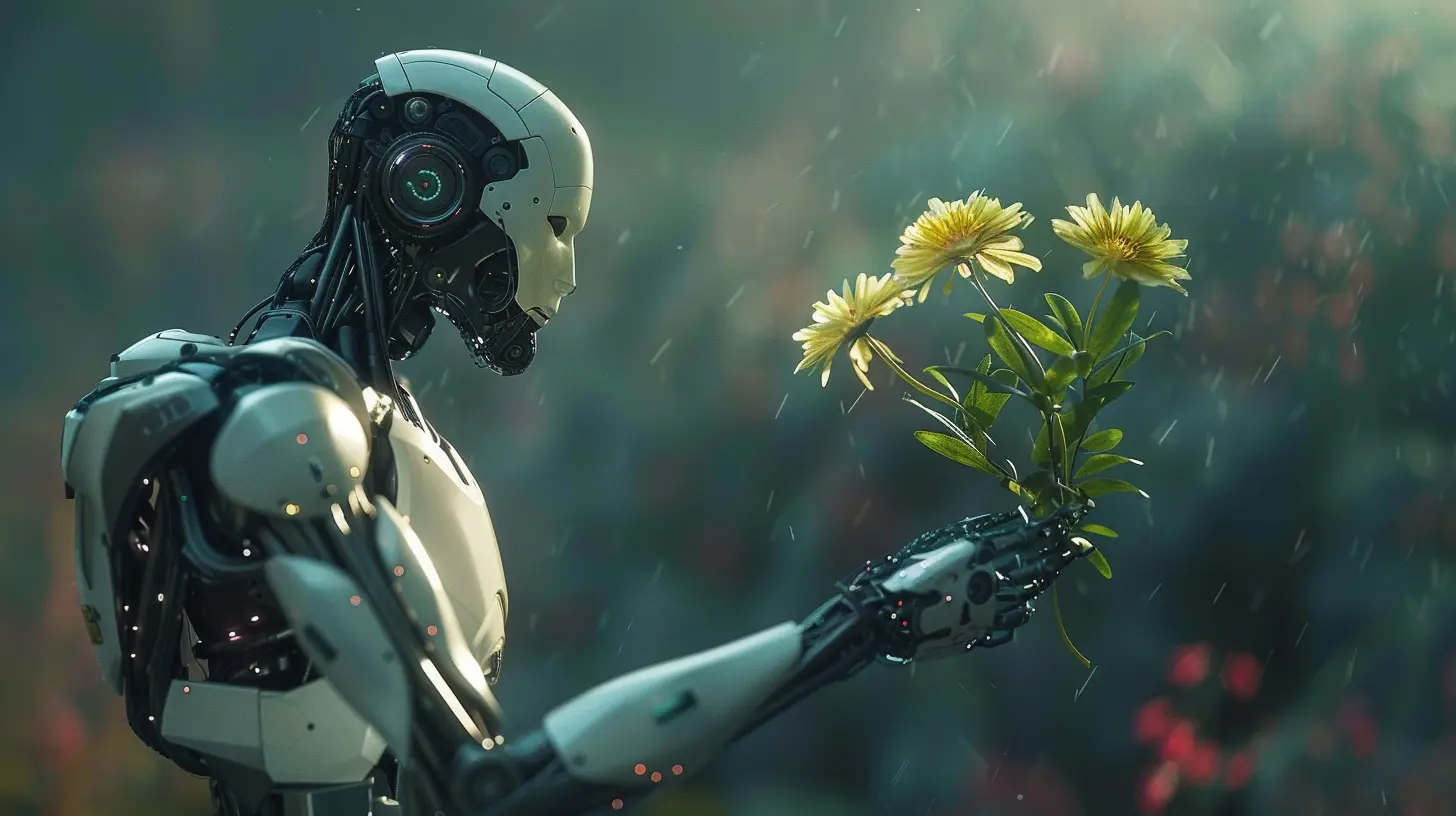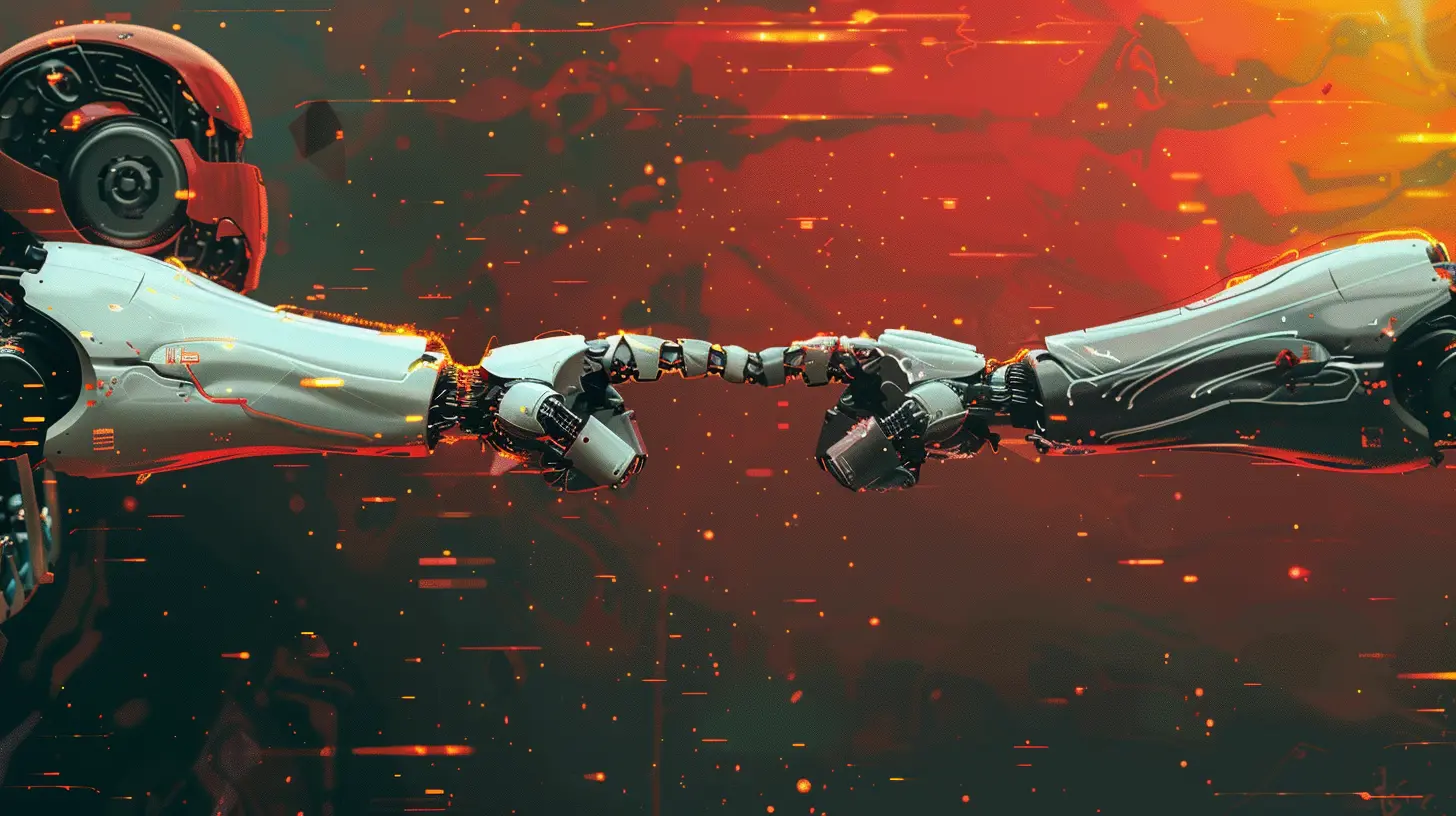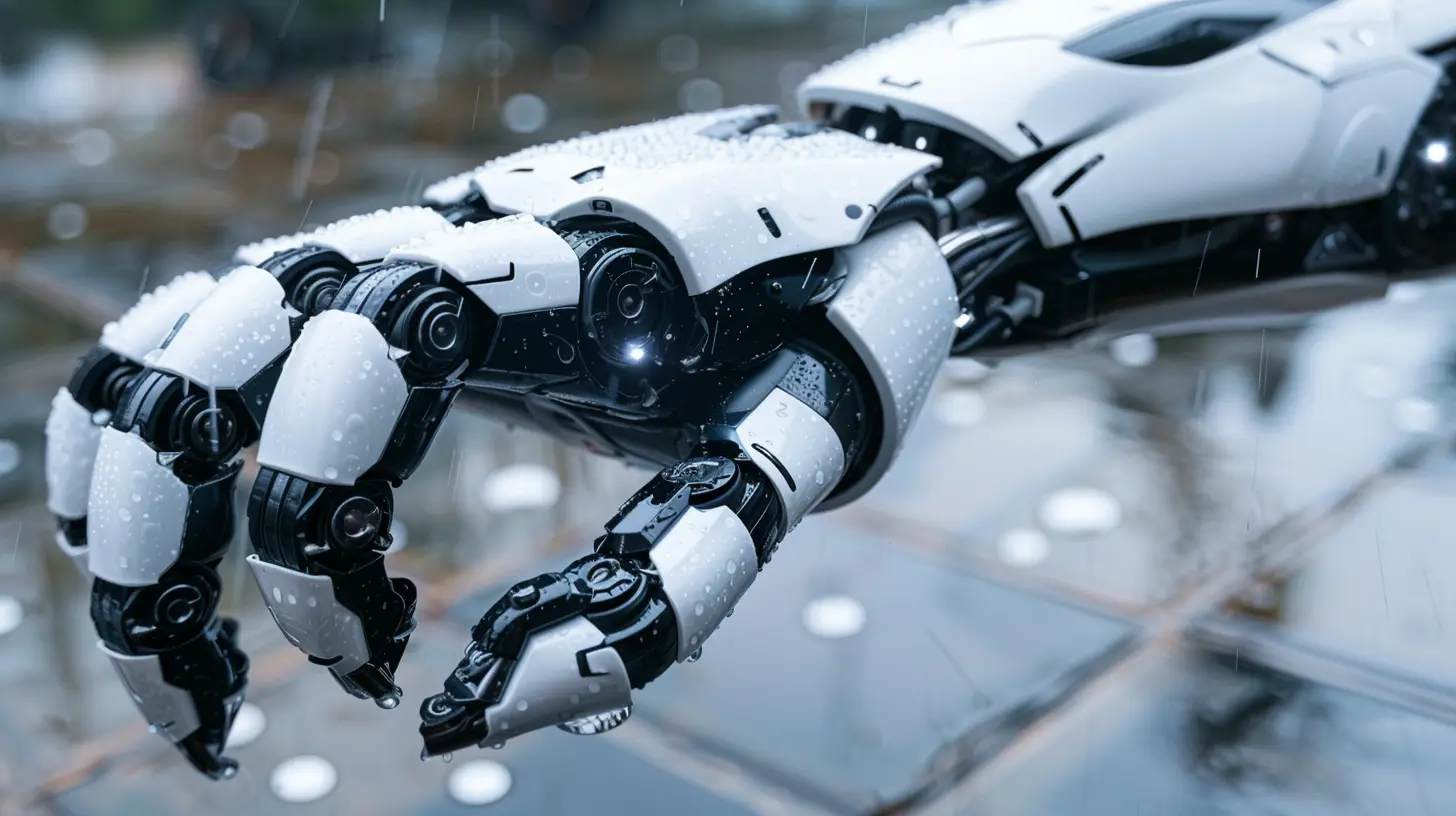How Can We Teach AI to Make Moral Decisions?
11 November 2025
Artificial Intelligence (AI) is no longer just a buzzword—it’s part of our everyday lives. From helpful voice assistants to self-driving cars, AI is changing how we interact with the world. But as this tech becomes smarter and more powerful, it raises some big, complex questions. One of the biggest?
How can we teach AI to make moral decisions?
Sounds like science fiction, right? But it’s not. It’s a real problem we’re dealing with today. Moral choices aren’t black and white. They're full of nuance, emotions, and context—which machines notoriously struggle with. In this article, we’re going to break down what morality means for machines, why it’s important, and how (if possible) we can train AI to make the right call when faced with ethical dilemmas.

The Moral Dilemma of Teaching Morality
Before we talk about how to teach AI morality, let’s get on the same page: what even is morality?Morality is the ability to distinguish right from wrong. For humans, it’s shaped by upbringing, culture, religion, society, and experience. Every person you meet might answer a moral question differently—and that’s okay. But machines? They need rules. Clear ones.
Here’s the kicker: morality is rarely clear-cut.
Take the classic "Trolley Problem." A runaway trolley is heading toward five people tied to a track. You can pull a lever to divert it to another track—where it will hit one person instead. What do you do?
Now imagine you're programming an AI to make this call. Yikes, right?

Why Moral AI Matters (Big Time)
If AI just handled simple tasks, we wouldn’t stress about morals. But nowadays, AI is making decisions that directly affect people's lives—like deciding who gets a loan, diagnosing medical conditions, or even deciding who gets released from prison on parole.So yeah, moral AI isn’t just important—it’s essential.
Here’s why:
- Autonomous Vehicles: Should a self-driving car swerve to avoid a child if it means endangering its passenger?
- Healthcare: Should an algorithm prioritize younger patients over elderly ones for organ transplants?
- Military: Should a combat drone be able to decide who’s a legitimate target?
These aren’t hypothetical scenarios. They're real, and they're happening right now.

Can Morality Be Coded?
Let’s be honest—coding morality sounds nearly impossible. Human morality is fuzzy, subjective, and varies by context. Trying to cram all that into lines of code? It's like trying to paint the Mona Lisa with a broom.But that hasn’t stopped computer scientists and ethicists from trying. There are a few main approaches they’re exploring:
1. Rule-Based Ethics
This method is kind of like setting up traffic rules. You give the AI a list of dos and don’ts. Super clear. Think Isaac Asimov’s famous Three Laws of Robotics, such as “A robot may not harm a human being.”Sounds like a good start, until you realize life doesn’t always follow the rules.
Let’s say harming one person actually saves ten others. Should the AI break the rule? Now you have a contradiction, and the AI might not know what to do.
2. Utilitarian Models
This approach tells the AI to choose the outcome that produces the greatest good for the greatest number. It’s practical—but cold. What if saving more lives means sacrificing someone innocent?Here's the catch: utilitarianism doesn't always match human values. Most of us aren’t okay with sacrificing one person, even if it saves ten. Emotions, relationships, and intent matter to us. But machines don't “feel” any of that.
3. Machine Learning Ethics
This one sounds promising. Basically, we feed AI tons of data—examples of human decisions in moral situations—and let it “learn” right from wrong based on patterns.The upside? It's dynamic and context-aware. The downside? The AI learns our biases. If the data we provide is flawed (and let’s be honest, it usually is), the AI absorbs all the junk too. That’s how you end up with AIs that discriminate or make unfair decisions without even knowing it.

Whose Morality Are We Teaching?
Here’s a question that doesn’t get asked enough: Which version of morality should we teach AI?Because one thing’s for sure—there’s no universal moral code. What’s acceptable in one culture might be considered inhumane in another.
So when we build moral AI, we’re also doing something a little scary: we’re embedding our own values into the machine.
Which leads to:
- Cultural Bias: If an AI is trained in the U.S., will it understand moral decisions in, say, Japan or India?
- Systemic Inequity: If AI learns from historical data, it may reinforce existing inequalities. (Remember that criminal sentencing AI that turned out to be racist? Yeah, that happened.)
Teaching Empathy to Machines: Is It Possible?
You and I make moral decisions with more than just logic. We use empathy—the ability to step into another person's shoes. That’s how we understand pain, fear, and joy, even when we don’t experience it ourselves.Now let me ask you: can a machine ever feel empathy?
Short answer: No.
Longer answer? AI can simulate empathy. It can be trained to recognize emotional cues, mimic human concern, and respond in a way that “feels” empathetic—but it doesn’t actually feel anything.
Is that enough? Maybe. Think of it like a really good actor—they may not be feeling the emotion, but if their performance convinces us, does it matter?
Humans in the Loop
Here’s one approach that almost everyone agrees on: keep humans involved.Rather than giving AI full moral autonomy, we can build systems where the AI suggests options, but the final decision comes from a human. This works well in areas like medicine and criminal justice.
Think of the AI as a super-smart assistant. It can process tons of data, highlight consequences, and even suggest ethical considerations. But the actual moral judgment? That still comes from us.
It’s kind of like GPS. It can guide you, offer alternate routes, and warn you about traffic—but you’re still the one driving.
Designing Moral AI: Best Practices (At Least for Now)
We may not have all the answers yet, but there are some guiding principles for creating more ethically sound AI:1. Transparency
We need to know why the AI made a decision. No more black boxes. If AI makes a controversial call, we should be able to trace the logic.2. Diversity in Development
Include people from different cultures, backgrounds, and professions in the AI design process. That way, the moral perspectives encoded aren’t just from a narrow group.3. Regular Audits
AI systems should be checked regularly to make sure they’re not drifting into unethical territory. Just like we have health checkups, AI needs moral checkups too.4. Accountability
If an AI makes a bad call, who’s responsible? The developer? The user? The company? These roles need to be crystal clear before we hand over the reins.
What the Future Might Look Like
Let’s fast forward. Imagine a world where AI genuinely helps us navigate moral gray areas—offering emotional support, helping resolve conflicts, and making society fairer.Wild? Sure. Impossible? Maybe not.
As our understanding of human morality deepens—and our AI technology evolves—we may find a sweet spot where machines not only respect our values but help us live by them better.
It’s not going to be easy. This journey will be full of debates, failures, and tough conversations. But one thing’s clear: teaching AI to make moral decisions isn't just a tech challenge—it's a human one.
Final Thoughts
So how can we teach AI to make moral decisions? The truth is, we’re still figuring it out. But it starts with facing tough questions, being honest about our limitations, and working together—across cultures, disciplines, and industries.We can’t automate conscience. But we can build systems that reflect it—if we’re careful, thoughtful, and always keep a human touch.
Because at the end of the day, teaching machines right from wrong is really about deciding what kind of future we want to build.
all images in this post were generated using AI tools
Category:
Ai EthicsAuthor:

Ugo Coleman
Discussion
rate this article
1 comments
Henrietta Lane
Teaching AI moral decision-making requires integrating ethics into algorithms, ensuring diverse perspectives are considered to reflect societal values and complexities.
November 11, 2025 at 5:50 AM

Ugo Coleman
Absolutely! Integrating ethics into AI algorithms is essential for fostering a balanced understanding of moral decision-making that reflects diverse societal values.


